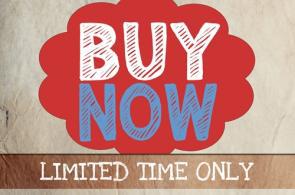- Enterprise
- Essentials
 Definition: Upselling is the practice of encouraging customers to purchase a comparable higher-end product than the one in question, while cross-selling invites customers to buy related or complementary items. Though often used interchangeably, both offer distinct benefits and can be effective in tandem. Upselling and cross-selling are mutually beneficial when done properly, providing maximum value to customers and increasing revenue without the recurring cost of many marketing channels.
Definition: Upselling is the practice of encouraging customers to purchase a comparable higher-end product than the one in question, while cross-selling invites customers to buy related or complementary items. Though often used interchangeably, both offer distinct benefits and can be effective in tandem. Upselling and cross-selling are mutually beneficial when done properly, providing maximum value to customers and increasing revenue without the recurring cost of many marketing channels.
Cross-selling
Cross-selling identifies products that satisfy additional, complementary needs that are unfulfilled by the original item. For example, a comb could be cross-sold to a customer purchasing a blow dryer. Oftentimes, cross-selling points users to products they would have purchased anyways; by showing them at the right time, a store ensures they make the sale.
Cross-selling is prevalent in every type of commerce, including banks and insurance agencies. Credit cards are cross-sold to people registering a savings account, while life insurance is commonly suggested to customers buying car coverage.
In ecommerce, cross-selling is often utilized on product pages, during the checkout process, and in lifecycle campaigns. It is a highly-effective tactic for generating repeat purchases, demonstrating the breadth of a catalog to customers. Cross-selling can alert users to products they didn't previously know you offered, further earning their confidence as the best retailer to satisfy a particular need.
Up-selling
Upselling often employs comparison charts to market higher-end products to customers. Showing visitors that other versions or models may better fulfill their needs can increase AOV and help users walk away more satisfied with their purchase. Companies that excel at upselling are effective at helping customers visualize the value they will get by ordering a higher-priced item.
Cross-selling and upselling are similar in that they both focus on providing additional value to customers, instead of limiting them to already-encountered products. In both cases, the business objective is to increase order value inform customers about additional product options they may not already know about. The key to success in both is to truly understand what your customers value and then responding with products and corresponding features that truly meet those needs.
Start growing your ecommerce business even faster.
Start Your Free TrialHigh-volume or established business? Request a demo